How to ski switch means learning to ski backwards. It might sound like a quirky skill, but the technique and versatility it gives you are a huge benefit to every skier. Being able to control your skis in all directions and recover from mistakes can really improve your confidence and ability.
Plus, if you can ski switch with a fast, smooth style, it is great for freestyle and looks brilliant. So, let’s get into it.
👉 Book ski lessons now with Freedom Snowsports
Look Where You Are Going
It sounds obvious, but being able to see where you are going is critical. Looking over your shoulder while skiing needs a shift in stance and posture, but this becomes the basis of strong control and balance.
Start by standing still on flat ground. Choose a shoulder to look over and let your whole torso rotate in that direction. This is the opposite of what you usually do when skiing forwards.
While turning your head and torso to look behind you, slide your foot back on the same side. This becomes your outside support leg once you start turning. You have just rotated your body, leading with the head to look where you are going.
Top tip: keep both hands over the supporting leg to help your weight stay centred.
Now switch to the other side. Practice moving from one shoulder to the other with smooth control. Avoid flicking your head too fast between sides, as this often leads to losing balance. Keep your legs flexed, stay controlled, and avoid leaning your shoulders away from the supporting leg.
Start Sliding
Take what you have learned to a gentle slope. Begin by sliding backwards across the hill in a traverse. Use the same movements as before. Look over your downhill shoulder, push that foot back, and keep your weight over the lower leg while sliding with control.
If you feel unsure or need to stop, you can simply point your skis forwards and ski out of it. Practice both sides until you feel confident, then move on.
Try Some Switch J Turns
Next up is the J Turn. This is where you draw a letter J in the snow as you slide. Stand on a gentle slope, facing uphill and ready to slide backwards. Use the skills you have just learned. Keep looking over your shoulder and rotate your torso with your head. Push your foot back to steer the turn.
Keep the turn going until it brings you back uphill and to a stop. Then reset and try the other side. Practise one side at a time with a stop in between each.
Link Your Switch Turns
Once you are confident doing J Turns on each side, it is time to link them together. The key here is making your shoulder transitions smooth. Keep your weight over the leading leg and stay flexed in your knees.
As you finish one C-shaped turn, let the pressure ease off your downhill ski and turn your body to face uphill. Pressure should now be equal on both skis. Then begin turning your head and shoulders the other way, transferring weight onto the new outside ski, and smoothly start the next turn.
Practice and Progress: How to Ski Switch
Stick to easy slopes for practice. This gives you the best chance to build good habits with clean, controlled movements. When you feel comfortable skiing backwards down the hill, you will be ready to take your new skills into the snowpark or steeper runs.
About the Author
Federico has been teaching alpine skiing in the French Alps for more than 10 years. He is the team manager of British-owned Freedom Snowsports, based in Méribel.
Freedom Snowsports runs courses for all levels in Méribel, Chamonix, Saint Gervais, and the Grand Massif. Whether you are just starting or training for instructor exams, they are the go-to team for developing your skiing.




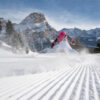



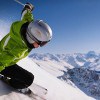

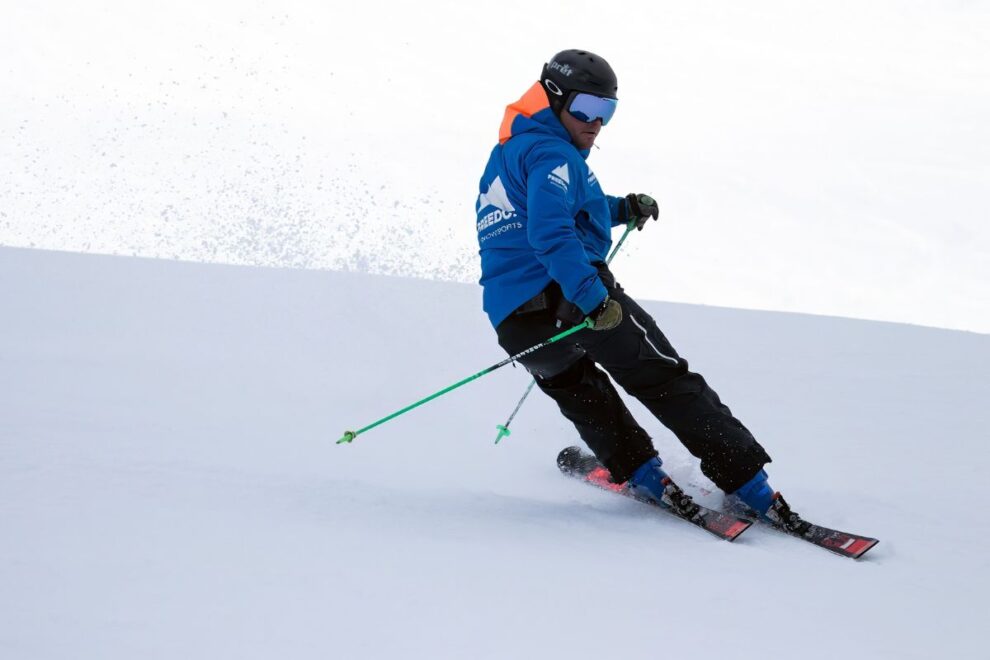
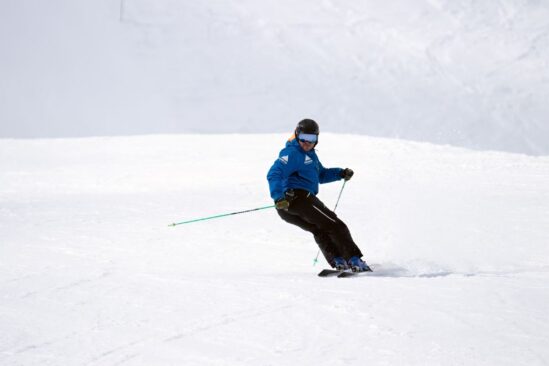
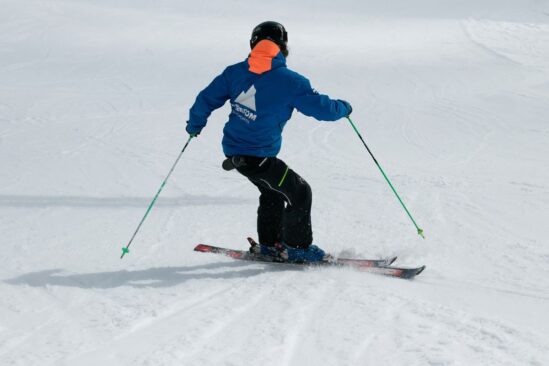
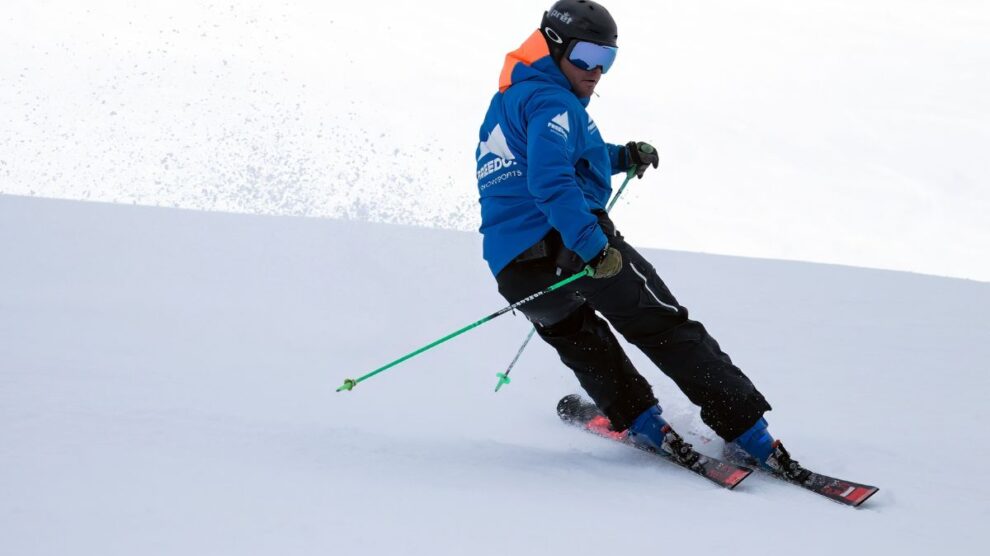
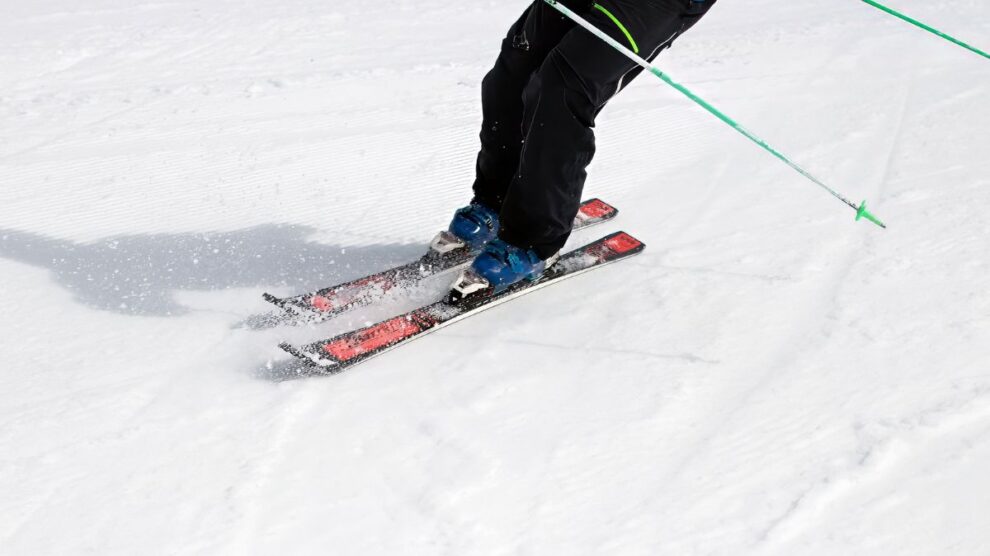



Add Comment